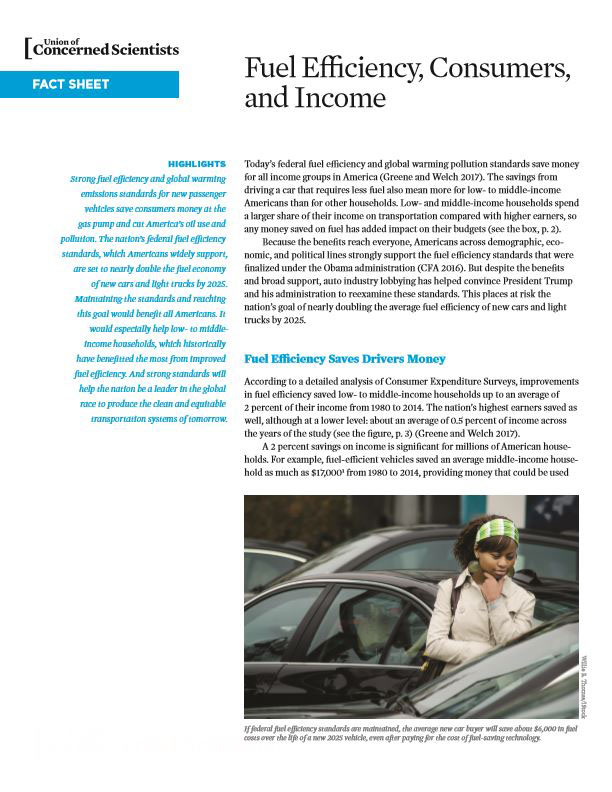Fuel efficiency and tailpipe pollution standards save money for all drivers, especially low- to middle-income earners
The savings from driving a car that requires less fuel mean more for low- to middle-income drivers more than for higher earners. Low- and middle-income households (meaning households with an annual income below US$100k in 1980 and $120k in 2015) spend a larger share of their income on transportation compared to higher earners, so any money saved on fuel has a larger impact on their budgets.
Despite broad, bipartisan support for strong vehicle efficiency standards, auto industry lobbying has helped convince President Trump and his administration to reexamine the current standards. This places at risk the nation’s goal of nearly doubling the average fuel efficiency of new cars and light trucks by 2025.
The benefits of improving vehicle efficiency
Transportation represents the second largest expense for many households in America. The average middle-income household devotes almost 20 percent of its income to transportation and for low-income households, transportation can consume as much as 30 percent of total income.
- From 1980 to 2014, improvements in vehicle efficiency saved low- to middle-income households up to an average of 2 percent of their income and saved the average middle-income household as much as $17,000. These savings provide money that could be used for other essentials, from food and clothing to education, health care, and family savings.
- The 2017 – 2025 fuel efficiency and global warming emission standards are on track to save the average new car buyer about $6,000 over the life of a new 2025 vehicle. Improved fuel efficiency is forecast to collectively save Americans $50 billion by 2030, money that can be spent locally instead of profiting multinational oil companies.
- Vehicle efficiency standards keep vehicles affordable. Though increasing vehicle efficiency comes at a modest cost, the cost of the most affordable vehicles has remained effectively constant over the past decade even though today’s vehicles are more efficient and cheaper to drive.
- Tailpipe emissions are one of the largest sources of global warming pollution in the U.S. Transportation accounted for 27 percent of total U.S. greenhouse gas emissions in 2015, and contribute to local air quality pollution that has been linked to asthma, heart disease, and other public health problems.
Weakening the standards is not a good idea
In March 2017, at the request of auto manufacturers, President Trump began the process to re-open vehicle efficiency and global warming standards that EPA previously affirmed. The standards for cars made in 2022-2025 have been undergoing a mid-term evaluation and based upon robust technical analysis and stakeholder input, EPA decided that these standards were both technically achievable and cost-effective.
Now, President Trump and Administrator Pruitt are seeking to reverse course and weaken these important standards that save car owners money at the pump. As part of this review process, the Environmental Protection Agency and the Department of Transportation will solicit comments from the public, the auto industry, and other interested parties on whether the United States should maintain its goal of nearly doubling the average fuel efficiency of new cars and light trucks by 2025.
Too much is at stake to put a hold on federal standards for fuel efficiency and global warming emissions.
No other existing federal policies can deliver greater oil savings, consumer benefits, and emissions reductions. Without measures like these, the United States will spend nearly $2 billion every day on dirtier, harder-to-reach oil—and that would hit the pocketbooks of low- to middle-income Americans the hardest.
Keeping the standards strong will ensure that families across America continue to see cost savings at the pump and insulate their budgets from oil price spikes. Strong standards will help the nation be a leader in the global race to produce the clean and equitable transportation systems of tomorrow.




